How to grow Echium
This member of the borage family is impressively diverse, with species ranging from knee high to a towering 4m tall, and available in colours including blue, pink, red, purple, yellow, and white. Hailing from stony hillsides, cliffs, and grassy steppes throughout Europe, the Canary Islands, the Mediterranean, Africa, and West Asia, these deep tap-rooted plants all do best given a sunny, free-draining spot. Some are reliably hardy in the UK (including our native Echium vulgare, also known as viper’s bugloss), while others need winter protection.
Depending on the species, echium can be annual, biennial, perennial (sometimes monocarpic, i.e., dying after flowering), or shrubby. The stiffly hairy foliage always forms a basal rosette, as well as occurring on the flower stems.
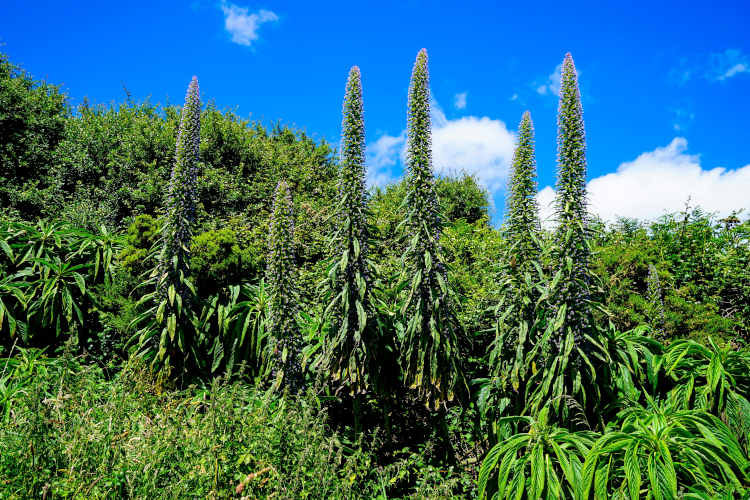
Zantedeschia is a genus of flowering plants from the family Araceae and is native to southern Africa. With a rich history dating back to the Ancient Romans, these deciduous or semi-evergreen perennials have been used as a symbol of celebration. Zantedeschia was Named after Professor Giovanni Zantedeschia, an Italian botanist.
There are two main forms of Zantedeschia: hardy and tender. Hardy forms of the plant can be grown outdoors, enjoy moist soil and full sun or partially shaded conditions - these are known as Arum lilies. Tender forms of Zantedeschia prefer being grown in containers or pots and should be brought inside over the winter - these are known as Calla lilies.
With tuberous flora in all colours from whites, yellows and oranges to deep reds and purples, Zantedeschias are not to be overlooked in any garden, as long as they have sufficient sunlight to grow in.
Ready to learn more about growing Zantedeschia? Read on for all there is to know...

Key Information
Soil pH
Position
Hardiness

Position- Full sun
Soil- Well-draining, any pH
Flowering Period- Mainly summer
Hardiness- Varies according to species (see below)
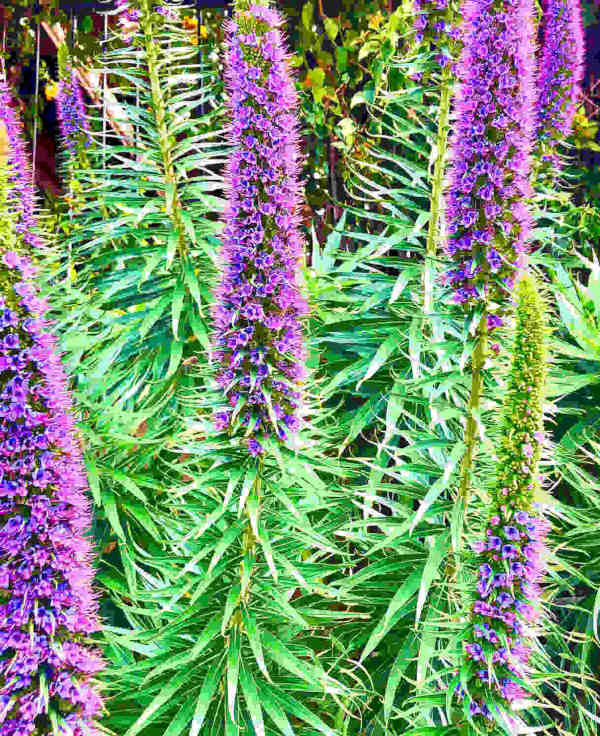
Where & when to plant Echium
Species | Hardiness | Life cycle |
Echium pininana | H3 (1°C to -5°C) | Short-lived perennial |
E. wildpretii | H2 (1°C to 5°C) | Biennial |
E. vulgare | H7 (-20°C and beyond) | Biennial |
E. candicans | H1C (5°C to 10°C) | Perennial subshrub |
For best results, plant container-grown echium out in late spring once all risk of frost has passed. This varies from region to region but usually falls somewhere around mid-May. Planting can also be carried out in summer, though be prepared to water regularly.
There is an echium to suit many different situations, from wildflower meadows (Echium vulgare) to dry gardens and exotic displays (E. winderpretii, E. pininana), and conservatories (E. candicans). Echium can be grown in a container, though make sure this is as deep as possible to allow for the tap root. The added benefit of a container, of course, is that it enables you to move less hardy species to a protected environment over the winter months.
How to plant Echium
- For planting in the garden, dig the soil area removing any large stones and weeds and breaking up any lumps. Mix in some organic matter such as manure or garden compost. If your soil is on the heavier side, now is also the time to add a generous helping of horticultural grit. Rake level and firm with your heels. Rake level again.
- Water plants well and allow to drain before planting.
- A good tip is to dig a hole twice the size of the root-ball. Fill with water and allow to drain before placing in the plant.
- Place the plant in the hole, ensuring the top of the root ball sits level with the surface of the soil. Too low and the plant may rot, too high and the roots can dry out.
- Backfill with soil and firm in gently with your foot.
- Soak well with water.
- Mulch around the base with well-rotted organic matter.
- For planting in containers, first choose an appropriately sized pot. Go for the deepest pot you can find, ensuring there are plenty of drainage holes in the bottom.
- If you are using a large or heavy pot, it can be a good idea to fill and plant it in situ to save yourself the trouble of moving once full.
- Use a good quality potting compost with plenty of horticultural grit mixed in, and, if not already present in the compost (check the description on the bag) some slow-release fertiliser granules.
- Start by partially filling the pot with compost; enough so that when placed on it the upper surface of the root ball is about 3cm lower than the top of the pot.
- Infill all the space surrounding the root ball with compost, firming down with your fingers then adding a little more so the plant is held tight.
- Pick up the container and lightly tap on the potting bench or ground a few times to help further settle the compost around the plant.
- Soak well with water.
- A mulch with horticultural grit will look attractive and help to prevent a ‘cap’ or crust forming on the top of the compost (something container plants can suffer due to the artificial nature of their watering).
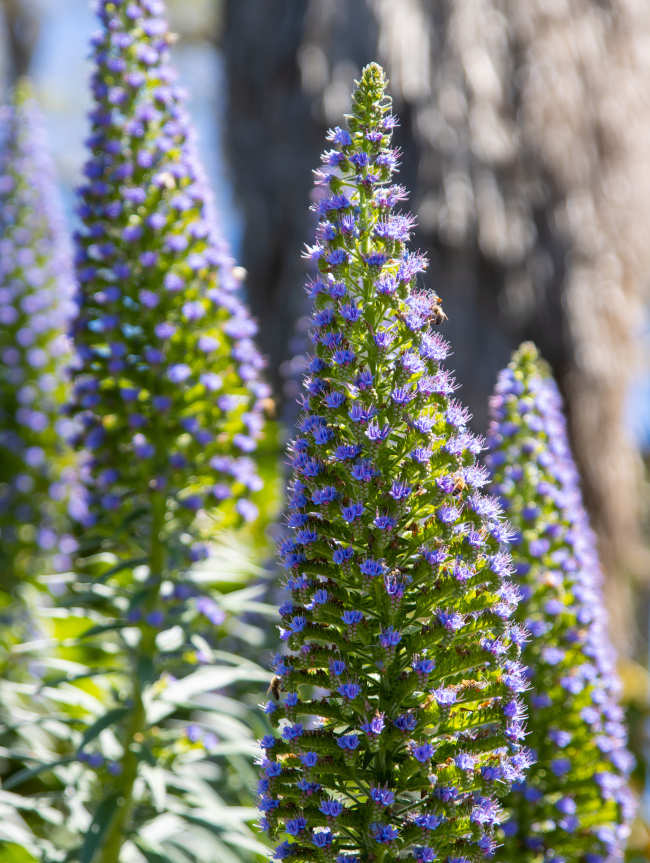
What to plant with Echium
Echium can suit different garden styles, depending on the species.
For E. vulgare (viper’s bugloss), try going down the wildflower meadow route, combining with companions such as Knautia arvensis, silene, leucanthemum, valeriana, and centaurea. Also, give our Fundamental Wildflowers Collection a look for more ideas.
Echium candicans makes a fabulous conservatory plant, alongside companions such as strelizia, dipladenia, citrus and plumbago. A colourful indoor paradise awaits!
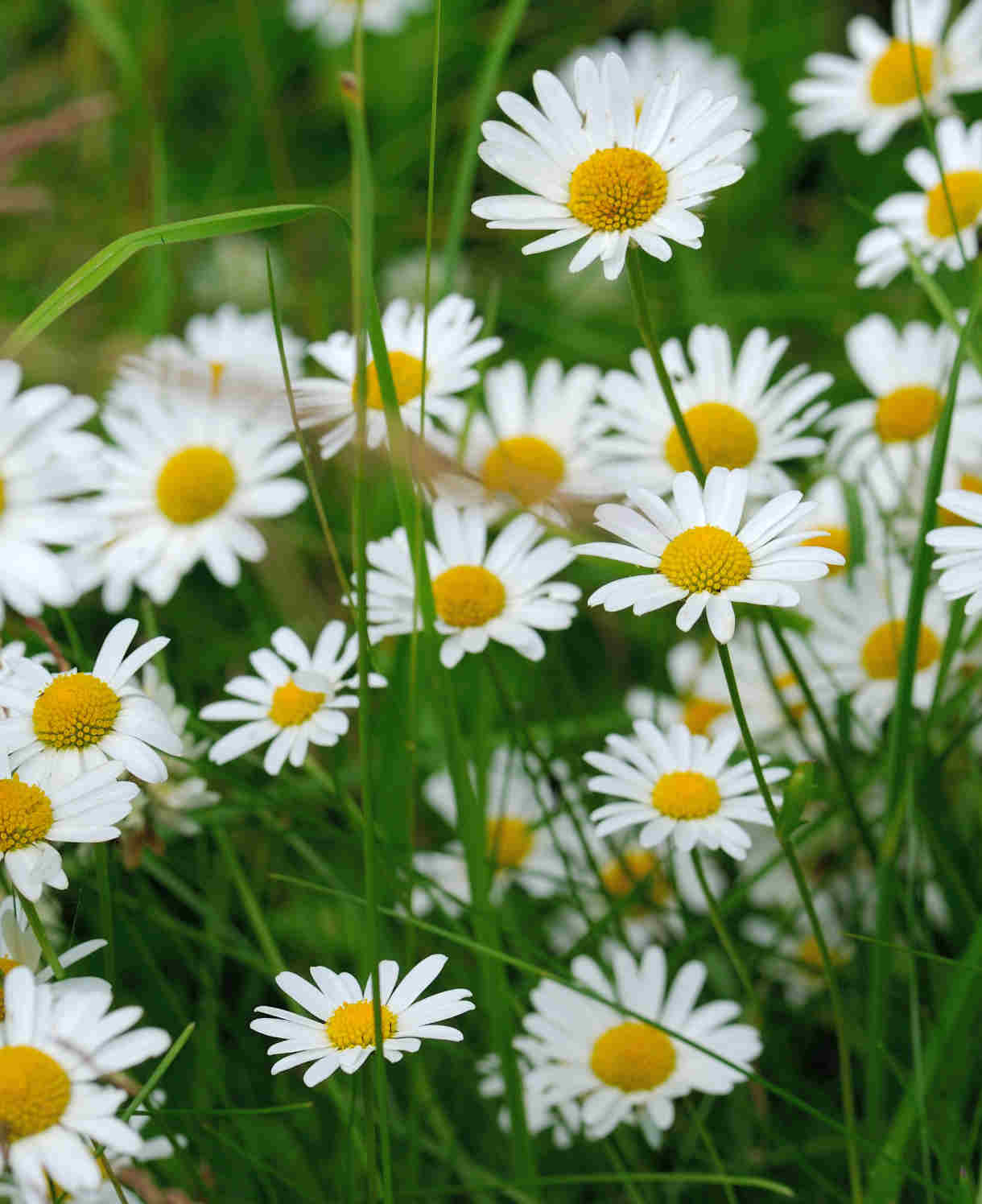
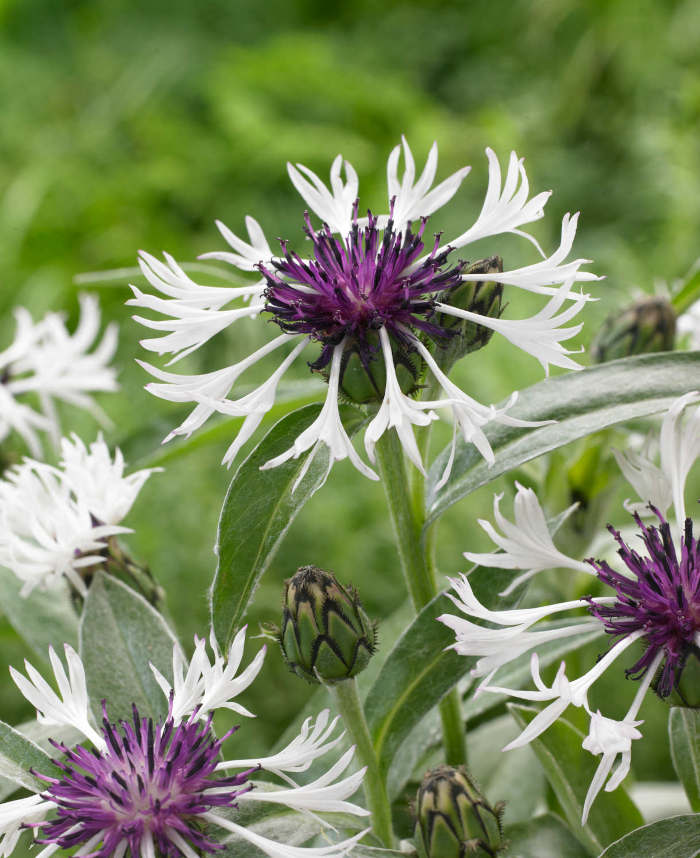
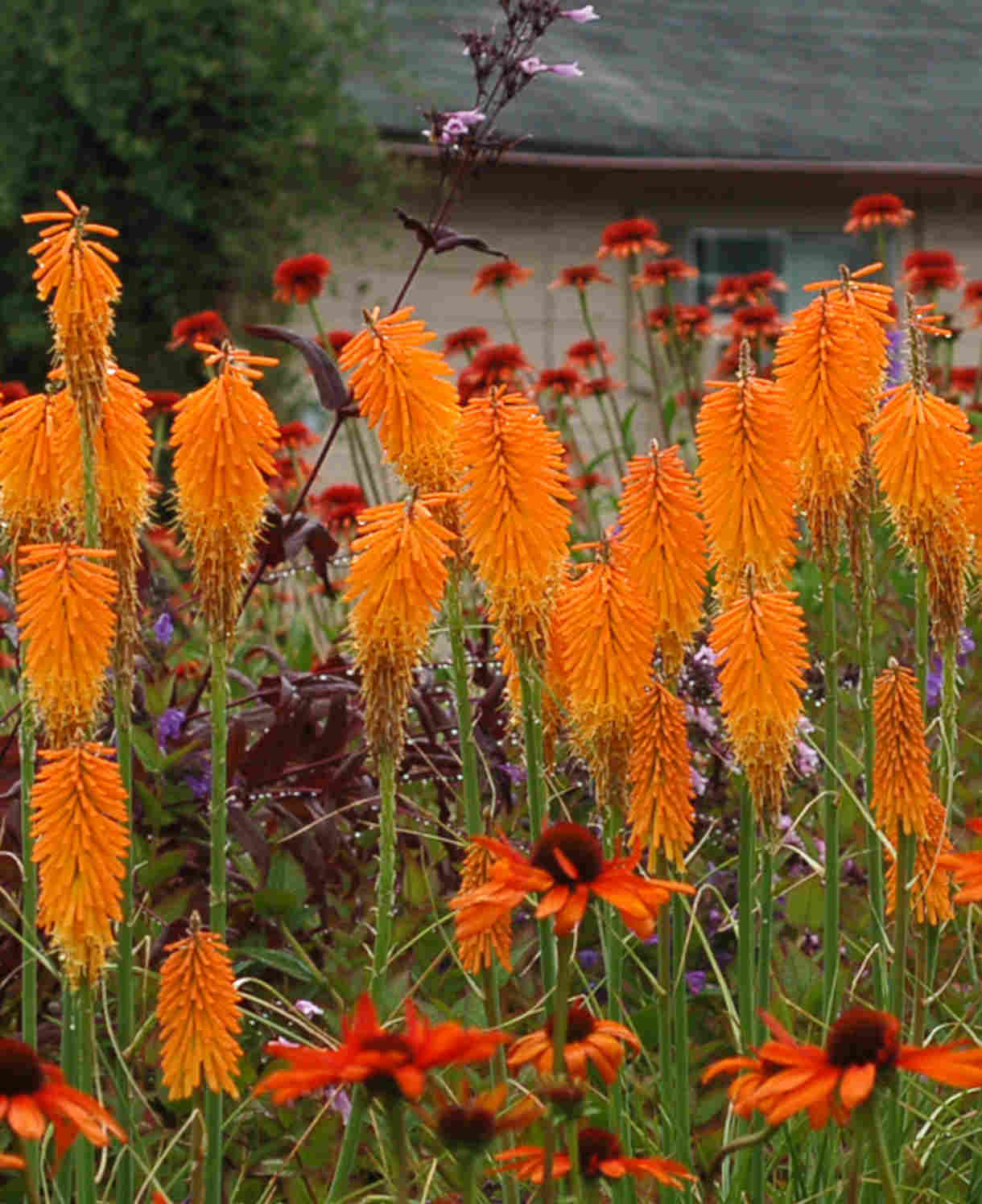
How to care for Echium
Pruning and Deadheading
Echium does not require pruning and in fact is best left untouched. Many types of echium will die following flowering, after which they can be removed to the compost heap. Assuming they are going to be given a frost-free environment over winter, shrubby types can be given a tidy in autumn, removing any flower spikes and giving a light trim.
Watering
During the initial few months of their first growing season in the ground, a good soaking every couple of weeks should ensure long-term success (aiming for slightly moist, but not soggy soil). After this, echium tends to be self-sufficient, needing only to be watered in exceptionally hot, dry weather.
Echium does not like to sit in wet soil, so it is important to avoid overwatering. Well-draining soil is essential, especially for the winter months when excessive moisture can be fatal. In very wet winters and/ or on heavy soil it may be worth erecting some kind of temporary shelter to shield your echium from the worst of the rain.
Container-grown echium needs to be watered regularly throughout the growing season. Allow the compost to almost completely dry out between soakings (check this with your finger).
During winter, container-grown echium that has been moved inside should be watered very sparingly.
Feeding
On healthy, fertile soil, an annual mulch of well-rotted organic matter (i.e., a layer of manure or garden compost applied to the soil around the plant) should provide sufficient nutrients for your echium. This has the added benefit of suppressing weeds and locking in moisture.
If yours looks in need of an extra boost (perhaps you garden on particularly poor soil), applying a general purpose granular feed to the surface of the soil and lightly working in (known as a ‘top dress’) can reap benefits. Aim to do this in spring.
Container-grown plants rely more on the gardener for their nutritional needs. Get off to a flying start by making sure you use a good quality compost, then throughout the growing season (April to September) apply a liquid feed at regular intervals according to its instructions. Alternatively, top dress with a general purpose granular feed every three months throughout the growing season.
Cold Protection
The hardiness of echium can vary considerably, so do make sure you check each individual species or cultivar to enable you to offer appropriate care.
Provided there is good drainage, anything rated H4 or higher should cope with an average UK winter without the need for additional protection. If you live in a very cold region, and/ or are growing a echium rated H3 or lower, we recommend taking precautions between the months of October and May to prevent winter losses. For H3/ H2 rated echiums this might be a cloche or some horticultural fleece placed over the top growth. For H1 rated echiums, you will need grow these in a container and overwinter in a warm greenhouse or conservatory, or even keep in here all year round.
Remember that winter waterlogging can reduce the hardiness of a plant, so do take care to avoid areas prone to this when planting.
Pests and Diseases
Echiums tend to be largely pest and disease free, though you may find slugs and snails develop a taste for their leaves, particularly when young. Encouraging natural predators into your garden, such as birds, frogs, toads, and hedgehogs, will make a big difference. Torchlight searches after dark (when slugs and snails are at their most active) are also effective, allowing you to collect the offending molluscs in a bucket and dispose of as you see fit. Relocating to a nearby woods or bagging up and putting in your freezer before popping them in the bin are said to be the most humane approaches.
Like most plants, once echium is well established it tends to be better able to tolerate the actions of slugs and snails without the need for intervention.
How to propagate Echium
Echium can be propagated from seed. This should be collected from plants when ripe and sown in pots from late spring to early summer. It is worth noting that while seed produced by straight species tends to come true to the parent plant, seed from named cultivars (e.g., ‘Pink Fountain’, ‘Snow Tower’) can be much more variable.
- Seeds are typically ready for collecting in late summer when the seedheads have dried and turned brown.
- Snip the seedheads from the plant using scissors or secateurs. Try to do this in dry conditions, and place in a small, labelled paper bag or envelope. Store somewhere cool and dry until it is time to sow.
- Fill a seed tray or small pot with a very well-draining compost mix, compressing the surface lightly with a flat piece of wood or the bottom of another pot.
- Sprinkle the seeds evenly over the surface of the compost.
- Use a garden sieve to cover with a fine layer of compost.
- Water the soil gently with a fine spray until it is evenly moist but not waterlogged.
- Place the seed tray or pots in a propagating unit, heated greenhouse, or on a sunny windowsill. If on the latter, covering with a clear plastic lid or plastic wrap will speed germination by creating a mini-greenhouse effect. Remove this once you notice seedlings emerge.
- When the seedlings have grown large enough to handle, transplant them into individual pots filled with a very gritty mix and continue to grow on in a warm, protected environment.
- Keep barely moist, never soggy.
- Plant out in late spring, following our ‘How to plant echium’ section above.
* Many plants carry Plant Breeders Rights and cannot be propagated for commercial purposes.
Common Echium questions
- Are echium easy to grow?
Given plenty of sun and drainage, and the right level of winter protection according to the species, echium can be a straightforward member of the garden which requires little in the way of pruning, feeding, or watering. - How long does echium take to flower?
Most echium flower in their second or third growing season.




